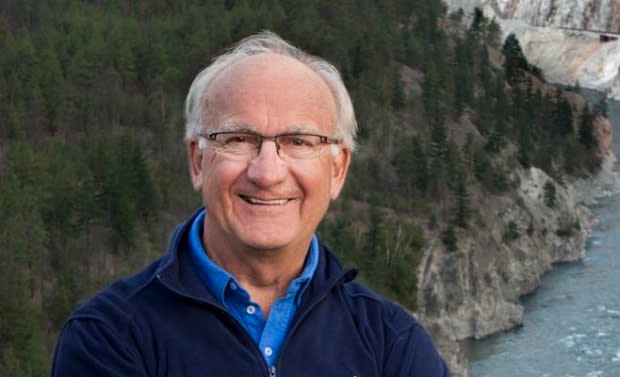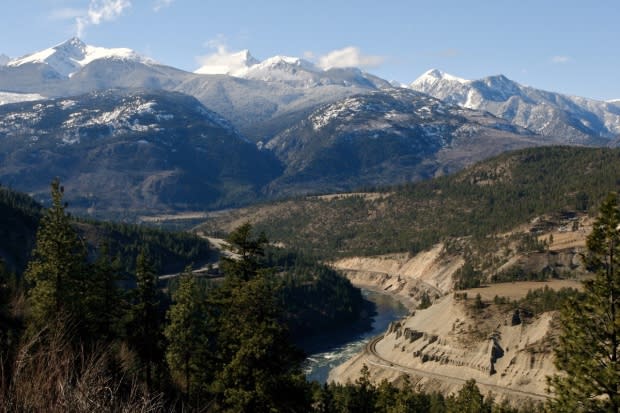Canada's self-declared hot spot is a village deep in a B.C. canyon
When temperatures in Lytton, B.C. start to climb, Bernie Fandrich does the same.
He stuffs his inflatable, U-shaped belly boat into the trunk of his car and drives up into the mountains, thick with fir and pine and far above the village. He parks when he finds his choice, bottle-green lake and shimmies into a pair of rubber waders.
He settles into his seat, dangles his feet into the water and kicks until he's well away from shore. He casts a light fly-fishing line and hopes for the tug of a rainbow trout.
It's an exquisite five, six, seven degrees cooler than it is in town.
"Usually, I'm the only one on the lake," said Fandrich.

Lytton is consistently one of the hottest places in the province, sitting deep in the Fraser Canyon at the point where the Fraser and Thompson Rivers meet. A sign on the side of the Trans-Canada Highway leading into town declares it "Canada's hot spot." On Thursday, it broke a record for daily heat when it hit 36.2 C.
The average temperature in July and August is 28.1 C.
B.C.'s all-time high of 44.4 C was set on July 16 and 17, 1941 — only 0.6 C from the highest temperature ever recorded in Canada.
The acrid heat is normal for the 2,000 people living within village boundaries and neighbouring First Nations. Most tough it out by heading to the rivers or a pool.

Fandrich isn't the only one who escapes to a lake.
Dr. Rosalin Miles said she and her family typically spend weekends at Botanie or Pasulko Lake, about half an hour out of the canyon.
"We go for a swim. We relax. People usually bring trailers or coolers. It's a really nice destination for families to go with their children," said Miles, 53, who is Nlha7kápmx and a member of Lytton First Nation.
"It's been our tradition for a long time," Miles said, adding that the community still harvests celery, wild potatoes, asparagus and Saskatoon berries in the valley. "We've been doing it for 10,000 years."

Bernie's daughter, Meghan Fandrich, said locals are only bogged down by the heat when spikes are sudden.
"I remember when I was growing up, it would be a lot more gradual," said Meghan, 36.
"We would have a spring and then it would ease into summer. Less now," said Meghan, who runs a café and handcrafts shop in town.
In recent years, she said, more people have been driving hours into the nearest cities to buy air conditioners, not stocked in the village's "one-and-a-half-grocery stores."
Canyons 'like an oven,' meteorologist says
Lytton shares the all-time provincial temperature record with Lilooet, about an hour north, but Environment Canada said Lytton has consistent been the warmer of the two over the past 30 years.
Only the Okanagan desert town of Osoyoos logs higher daily temperatures, but it still hasn't touched the record.
Lytton's penchant for heat is the product of its geography. It's too far from the coast to benefit from cool ocean air and deep enough in the canyon to essentially bake during the summer.
"Canyons are really efficient heating mechanisms that kind of act like an oven," said Environment Canada meteorologist Matt MacDonald. "The steep canyon walls heat up during the day and all that hot air gets trapped at the valley bottom, making for super hotspot."

The Trans-Canada route passing through Lytton links Vancouver and Kamloops, but travellers generally favour the quicker Coquihalla Highway option.
"Boy, I would encourage people — whether they're local or whatever — to take the route through the canyon here. There's there's some beautiful, beautiful vistas," Bernie Fandrich said, speaking by phone early Thursday morning.
"Mind you, it's only 30 degrees today."
